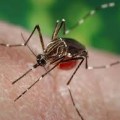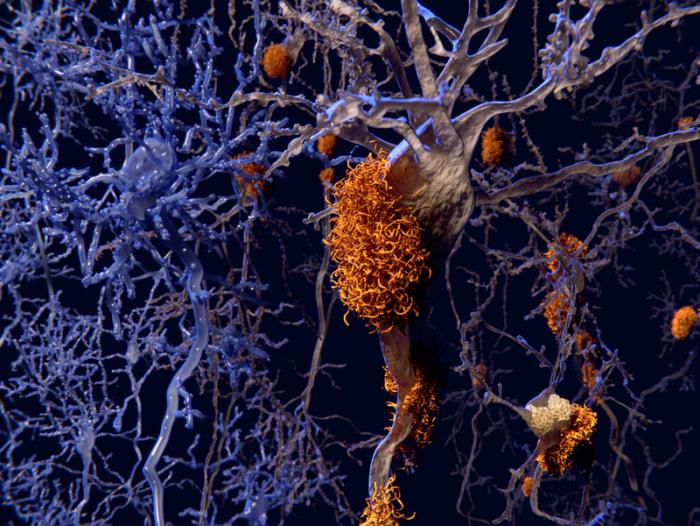A number of steps can be taken to lower blood pressure. These include lifestyle measures as well as drugs that doctors can provide.
The measures against blood pressure can be grouped into three main areas:
- Diet
- Exercise
- Drugs
The ways to lower blood pressure also lower heart, stroke, and other risks more generally.
Contents of this article:
- Ways to lower blood pressure
- What is the quickest way to lower blood pressure?
- Why is high blood pressure bad?
Ways to lower blood pressure
Here are six simple ways to lower high blood pressure.
1. Eat healthily – the DASH diet
The DASH diet stands for “Dietary Approaches to Stop Hypertension.” It involves eating a diet that is rich in fruits and vegetables and in dairy products that are low in fat. The diet is also low in fat, and saturated fat in particular.
![[blood pressure test]](http://www.medicinetechnews.com/images/201609/blood-pressure-high.jpg)
High blood pressure or hypertension occurs when the blood flow pushes against the walls of the arteries with greater force.
The overall energy intake of the DASH diet is around 2,000 calories a day, and it should be made up from:
- Grains: 6 to 8 servings a day – these include bread, cereal, rice and pasta
- Vegetables: 4 to 5 servings a day – serving examples are 1 cup of salad leaves or 1/2 cup chopped vegetables such as carrot
- Fruits: 4 to 5 servings a day – including juice, with 1 serving made up by 4 ounces of juice
- Dairy: 2 to 3 servings a day – 1 serving is a cup of skim milk or low fat yogurt
- Nuts, seeds, and legumes: 4 to 5 servings a week
Other parts of the diet are low daily amounts of lean meat and poultry. Oily fish such as salmon and tuna are a healthy meat option for the heart.
The DASH goal is to keep the total daily calorie level below 30 percent coming from fats. Monounsaturated fats are healthier and include plant oils such as olive oil. Saturated fat and trans fat levels need to stay low. Trans fat can be cut by eating less processed and fried food.
2. Cut down on sodium
Cutting sodium intake is proven to lower blood pressure. Evidence from clinical trials is “strong and consistent,” according to the American College of Cardiology and the American Heart Association.
Their guidelines say that anyone can benefit from the blood pressure-lowering effect of cutting salt. This is true whether:
- A person has high blood pressure
- Is a man or woman
- Regardless of age and race
Cutting sodium intake means consuming less salt. People should reduce the amount of processed and restaurant foods they eat, which have high salt contents. People should also avoid adding salt when cooking or eating.
The Centers for Disease Control and Prevention (CDC) say that Americans “consume an average of more than 3,400 milligrams of sodium each day.”
The current dietary guidelines for Americans are that 2,300 milligrams of sodium is the maximum limit each day, they add.
Eating less of the following high-sodium foods will help with efforts to reduce salt intake:
- Bread
- Cold cuts and cured meats
- Pizza
- Poultry
- Soups
- Sandwiches
- Cheese
- Pasta and meat dishes
3. Do exercise, lose weight
In the United States, the recommendation for exercise against blood pressure is:
![[exercise]](http://www.medicinetechnews.com/images/201609/exercise.jpg)
40 minutes of exercise 3-4 times a week is an effective way to lower blood pressure.
- Adults can do an exercise activity of 40 minutes 3 or 4 times a week to lower their blood pressure
- Sessions should involve physical activity that ranges in intensity from moderate to vigorous
Exercise reduces the heart rate, which is a good indicator of the level of physical fitness. Exercise also helps tackle obesity, which raises blood pressure by putting more demand on the heart.
4. Stop smoking, drink moderately
Stopping smoking, or not taking it up in the first place, is an important step against a wide array of health risks. Similarly, keeping alcohol intake to sensible levels helps against high blood pressure and has other benefits, too.
People should also keep caffeine intake to moderate levels. Coffee or energy drinks, for example, should not be the only source of fluids.
5. Sleep well
A number of scientific studies have found that poor sleep is linked to higher blood pressure. Sleeping well may be one way to help reduce blood pressure. Good sleep patterns and duration have other proven benefits, too.
One group of scientists recently reviewed all the evidence for the link between sleep and high blood pressure. Published in the Journal of Clinical Sleep Medicine in 2015, the study concludes that getting 7 hours of sleep each night is linked to the lowest risk of raised blood pressure.
The study found that the riskiest sleep habit for blood pressure readings was 5 hours a night. Women were at greater risk from poor sleep than men.
Scientists have looked at a number of possible reasons why a lack of sleep could raise blood pressure but are still unsure.
One theory is that stress hormone levels are higher in people after they have had less sleep. These hormones tighten blood vessels and raise pressure.
Other ideas are related to the “central biological clock” affecting blood pressure. This is a rhythm that responds to eating, light exposure, amount of activity, and sleep.
If someone finds that they gasp for air while sleeping, they may need to be tested for obstructive sleep apnea (OSA), a secondary cause of high blood pressure. Controlling OSA with a machine at night to help with breathing can improve blood pressure.
6. Get medical care
There are clear guidelines that doctors use to decide when high blood pressure levels need medical treatment.
![[blood pressure meds]](http://www.medicinetechnews.com/images/201609/blood-pressure-meds.jpg)
Antihypertensives are drugs that can help to lower blood pressure levels.
A number of drugs are available to help bring down blood pressure levels. These medications are known as antihypertensives. They include:
- Thiazide-type diuretics
- Calcium channel blockers
- Angiotensin-converting enzyme inhibitors (ACEIs)
- Angiotensin-II receptor blockers
These drugs are only available on prescription from a doctor. It is important to follow their advice and that of pharmacists.
The goal of drug treatment is to get the blood pressure back down below these high levels. The drug dose may be raised or a second drug added if blood pressure does not come down after a month.
Certain groups of people have different individual treatment guidelines. Doctors consider different thresholds or different drug classes for people with diabetes, kidney disease, or who are black.
Black people, for example, have benefitted in trials more from thiazide-type diuretics than from ACEIs.
What is the quickest way to lower blood pressure?
Raised blood pressure is a condition that develops over a number of years, and there is no quick fix for it. All methods to bring blood pressure down need time to take effect.
Lowering blood pressure and tackling other health risks is also a highly individual matter. What may be best for lowering blood pressure in one person might not work for a different person.
Medications take effect more quickly than lifestyle measures, but drugs are reserved for the most serious cases of high blood pressure. All drugs also involve risks and costs.
Why is high blood pressure bad?
High blood pressure is when the blood flow pushes against the walls of the arteries with greater force. It is also known as hypertension.
Raised blood pressure is a danger because it is linked to a higher risk of blood vessel disease over time. It can lead to events like:
- Heart attack – an artery supplying the heart gets blocked
- Stroke – blood supply to part of the brain gets cut off
The risk of such cardiovascular diseases is even higher if other risk factors such as smoking are present.



